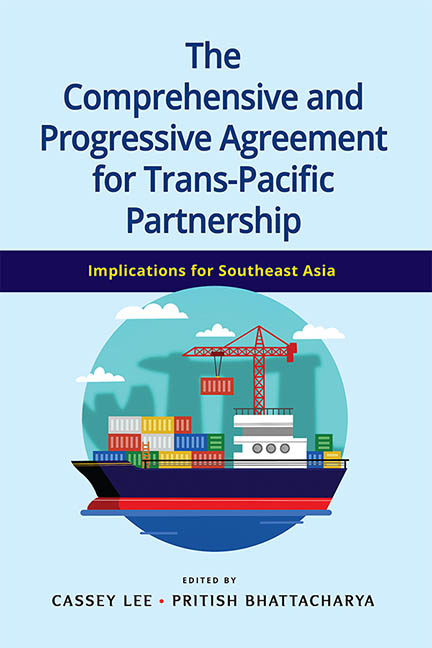Book contents
- Frontmatter
- Contents
- Preface
- Abbreviations
- About the Contributors
- 1 Introduction
- 2 The Economics of the CPTPP and RCEP: Asia Pacific Trade Agreements without the United States
- 3 The TPP and CPTPP: Truths about Power Politics
- 4 The Investment Chapter and ISDS in the CPTPP: Lessons from and for Southeast Asia
- 5 Intellectual Property in the CTPP and Access to Medicines A Thai Perspective
- 6 New Rules for State-Owned Enterprises in the CPTPP
- 7 Impact of the CPTPP on Japanese Manufacturing Affiliates in ASEAN
- 8 Reassessing Malaysia’s Export Opportunities in the TPP and CPTPP
- 9 Impact of the CPTPP on Vietnam
- 10 Should Thailand Join the CPTPP?
- 11 Indonesia, the TPP and CPTPP: Hold Your Breath
- Index
9 - Impact of the CPTPP on Vietnam
Published online by Cambridge University Press: 08 October 2021
- Frontmatter
- Contents
- Preface
- Abbreviations
- About the Contributors
- 1 Introduction
- 2 The Economics of the CPTPP and RCEP: Asia Pacific Trade Agreements without the United States
- 3 The TPP and CPTPP: Truths about Power Politics
- 4 The Investment Chapter and ISDS in the CPTPP: Lessons from and for Southeast Asia
- 5 Intellectual Property in the CTPP and Access to Medicines A Thai Perspective
- 6 New Rules for State-Owned Enterprises in the CPTPP
- 7 Impact of the CPTPP on Japanese Manufacturing Affiliates in ASEAN
- 8 Reassessing Malaysia’s Export Opportunities in the TPP and CPTPP
- 9 Impact of the CPTPP on Vietnam
- 10 Should Thailand Join the CPTPP?
- 11 Indonesia, the TPP and CPTPP: Hold Your Breath
- Index
Summary
Introduction
After more than thirty years of economic reforms (Đổi Mói), Vietnam has made a remarkable transition to a market economy. The country has reached new heights in socio-economic development in general, and economic growth in particular. For example, between 1990 and 2006, Vietnam witnessed high and sustained economic growth of 7.44 per cent per year on average. Recently, in line with economic growth, more resources for development have been mobilized, resulting in positive structural shifts and significant improvements in living standards of the country's population. More importantly, Vietnam has also surpassed the low income threshold, formally becoming a low middle income country in 2008.
The aforementioned achievements resulted from the economic and political reforms under Đổi Mói through three channels: marketoriented economy; macroeconomic stability; and international economic integration. Additional reforms in the form of state-owned enterprise (SOE) restructuring, private and financial sector development, public expenditure management and trade liberalization also proved crucial. These facilitated Vietnam's international economic integration by attracting more foreign investments, generating more opportunities for the business community, and adopting the international best practices in several institutions. Economic liberalization and deeper integration into the international economy have also created momentum for Vietnam to carry out its pending domestic reforms. In fact, during periods of maximum integration (1989–96 and 2000–7), the country enjoyed unprecedented socio-economic improvement.
Being a part of a mega free trade agreement (FTA) like the Comprehensive and Progressive Agreement for Trans-Pacific Partnership (CPTPP) is not a start and/or end point of Vietnam's global integration process. The CPTPP, however, is considered a model treaty for the twenty-first century because of its overwhelming scope, scale and influence compared to other agreements—both regionally and globally. Being the least competitive and developed of all CPTPP members, Vietnam participated enthusiastically in the agreement's long negotiation process. Despite the official withdrawal of the United States in early 2017, Vietnam has been optimistic about the progress and conclusion of the agreement, demonstrating its willingness to promote free trade and regional economic integration, while simultaneously developing bilateral relations with other member countries.
- Type
- Chapter
- Information
- Publisher: ISEAS–Yusof Ishak InstitutePrint publication year: 2021

